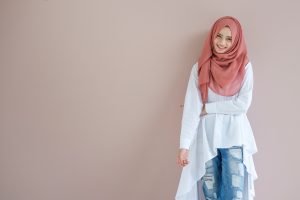My barber asked me, “Of all the places you’ve lived in and traveled to, which one was the most different?”
Without hesitation I said the Saudi Arabian Peninsula and the Bedouin Arab culture.
I don’t know why I responded so fast, because my strong, personal opinion is we’re all pretty much the same. I’m suspicious when words are used to describe how different we are.
Because we use contrast more than comparison with our use of language, my growing suspicion is that language imprisons us.
Presently, I no longer trust how we define social and cultural groups and put them into categories. Also, I no longer trust definitions of words that subsequently steer our thinking toward undesirable ends. Most definitions, especially when contrasting different cultures, are used to make us and our culture feel superior to another culture.
Let’s take the Arab culture in the United Arab Emirates I mentioned earlier as an example. I would wager that people who live in Europe and America are suspicious of Arabs of the Middle East. We feel especially uncomfortable with how they dress.
Women, for instance, wear the abaya and shaylah (black robe and head covering) and men wear the dishdasha and ghoutra (white robe and head covering).
As I continued doing business there I noticed that underneath the abaya, women wear western cloths. Underneath the dishdasha, men wear a white t shirt and white pants. Some men in the summer just wear regular style western jockey shorts.
Now, why do I bring this up?
I’m a Mormon, and orthodox Mormons, wear religious garments or underwear underneath their outer western style clothing. In the temple, however, women dress just like Arab women, except their abaya and ghoutra are white instead of black. Men wear a modified form of a dishdasha. Under the dishdasha is worn a white shirt and white pants.
When I mention these similarities, most Mormons become uncomfortable when I use abaya and dishdasha in describing their clothing inside the temple. Most of the time Mormons make sure that the name of their temple garb is correctly called “temple clothing”. They reflexively shy away from the positive comparison of other practices, and hang on to the differences.
Others may think that Mormons are odd because they wear religious underwear outside the temple, and are weirder yet for wearing full Arab like dress inside the temple. In reality, the truth is simpler than that. At some level of clothing, we all, Arab, Mormon, non-Arab, non-Mormon, wear the same western style clothing. In this instance we are all much more alike than we are different. Western style clothing is something we all have in common.
Deeper yet, our DNA is 99.99% the same. Yet, with language and words, we dwell on slight differences.
By the use of words we make most of our decisions based on ever so slight differences. Similarities for some reason are left out. Why?
My theory is that language most often is used as a tool of power. Political, religious, academic and business elites use words that divide us so that they may persuade you to follow and support them as they elaborate on the subtle nuances of differentiation.
I’ve concluded that language is not neutral, neither is it objective. It is most often crafted for dividing not uniting people. The saying that sticks and stones may break my bones but words will never hurt me is only partially correct. Yes, sticks and stones may break my bones, but words will do more than that; words will shape my mind and make me think I am superior to others who are at best only a tiny, tiny bit different from me.
